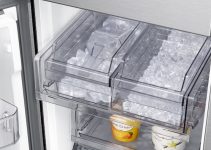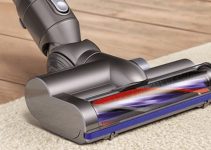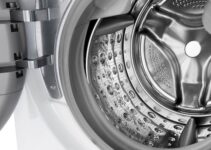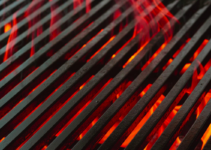Sometimes a faulty garbage disposal only needs a nudge to get back up and running. Other times, the fix is more involved. Try these fixes before calling a repair person. With some troubleshooting, you can likely solve the issue yourself.
Summary
The most common issue with garbage disposals not working is a jammed motor or blades that need to be cleared of debris buildup.
Simply unplugging the unit and manually removing stuck food scraps, utensils, etc. often gets the appliance up and running again.
Resetting internal breakers or tightening loose wiring connections also revives many faulty disposals. While a complete replacement may eventually be needed for an older model, trying some easy fix-it methods first saves the cost and hassle of installing a new unit.
Frequently a few basic maintenance steps clear up the problem and get several more years of service out of your existing garbage disposal.
What To Check When My Garbage Disposal Not Working
If your garbage disposal suddenly stops working, there are a few quick things to check before taking more drastic measures:
- Verify That the Garbage Disposal Is On and Plugged In – Make sure the power cord is firmly plugged into the outlet under the sink. Check that the wall switch controlling the garbage disposal is turned to the “On” position.
- Locate the reset button beneath the garbage disposal. If the button has popped out, it is likely that the garbage disposal stopped working because it tripped its built-in circuit breaker, probably due to overloading. Press in the reset button – if it does not stay depressed, wait about 10 minutes and try again. If the reset button stays in, flip on the garbage disposal’s power switch to see if the unit starts back up.
- Check the circuit breaker at your home’s electrical panel – verify the garbage disposal’s circuit has not been tripped and reset the breaker if necessary.
- Check the garbage disposal’s wall switch – remove the switch plate and check for loose connections, tighten them if necessary.
- Check the point where those wires connect to the unit. They may have come loose due to the garbage disposal’s vibration and need tightening.

Insights: Electrolux Dishwasher Not Draining: How to Fix
5 Reasons Your Garbage Disposal Not Working
If your garbage disposal fails to start up after checking those basics, the issue likely stems from one of these common problems:
1. Won’t Turn On
If your garbage disposal won’t start up, the cause may be:
- A blown fuse or tripped breaker – check and reset if needed
- Clogged shredding chamber – unplug and manually remove debris
- Faulty wiring – consult an electrician
If these simple fixes don’t get your unit going, it likely needs replacement.
How to Fix: Unplug the unit, check the chamber for debris, remove clogs manually, check and reset breakers, and evaluate and tighten wiring connections.
Pro Tip: Draw a glass of cold water from the tap and pour it down the drain as you flip the disposal switch. The sudden temperature change sometimes jolts a sluggish unit to life.
2. Humming Sound
A humming noise usually means the garbage disposal blades are stuck and unable to spin. This is often caused by:
- Something jammed in the unit – food scraps, broken glass, utensils etc
- Worn motor bearings
- Stalled blades that have lost torque
How to Fix: Unclog the unit by inserting an Allen wrench or stick into the bottom opening and turning back and forth to dislodge debris. Utilize the reset button if equipped. Replace disposal if internal parts are too worn.
Pro Tip: Never put hands into a garbage disposal! Always unplug unit first when attempting fixes. Wear gloves to protect from sharp debris.
3. Water Leak
Water leaking near the base of your garbage disposal can stem from:
- Cracked/damaged sink flange
- Leaking drain pipe connections
- Failing sink seal ring
- Internal housing cracks
How to Fix: Evaluate the leakage point. Patch cracks with waterproof epoxy. Tighten connections. Replace damaged parts like rings and flanges.
Pro Tip: Place a bucket or pan under unit to catch leaks. This protects under-sink hardware and simplifies leak identification.
Image source: WM Henderson Inc.
4. Inefficient Draining
If wastewater bubbles back up when running the disposal, a clog is likely preventing proper drainage. Buildup in the P-trap or sewer line slows water movement.
How to Fix: Disconnect pipes and hand-clean out P-traps. Use a zip-it cleaning tool to clear drains. Install screens to catch debris. Consider adding a freshwater rinse to move particles down post grinding.
Pro Tip: Grind citrus rinds to help deodorize drains and break down grease. Their oils naturally cut grime.
5. Strange Odors
Foul garbage disposal smells come from decaying food buildup inside the unit. With stagnant water, bacteria multiplies quickly.
How to Fix: Clear inside unit by grinding ice cubes, citrus peels or baking soda. Mix in dish soap to help clean residue. Disinfect by pouring 1⁄2 cup bleach or vinegar down drain. Run hot water for a full minute afterward to prevent corrosion.
Pro Tip: Eliminate odors long-term by regularly grinding lemon peels. Their citric acids fight grime and leave a fresh scent.
When You’ve Tried It All and It’s Still Not Working
If you have worked through various troubleshooting tips and your garbage disposal still refuses to start up, it may be time to call a professional plumber. Continually cycling a faulty unit can lead to other problems like leaky pipes, electrical shorts and untreated clogs spreading through kitchen drains.
Sometimes the internal components of a garbage disposal – like ground rings, splash guards and shredder plates – get too compromised from normal wear and tear and need replacing. Electrical control boards can also malfunction. A pro can assess the full internal workings and determine if repairs are viable. If your unit is older, replacement is likely the best option. Newer models not only work better but are safer and quieter.
Leave us your name, number and location details below and we’ll connect you to an affordable technician in your area to get your garbage disposal properly fixed.
Maintain Your Garbage Disposal To Prevent Issues
Regular garbage disposal maintenance keeps these indispensable appliances running smoothly for years. Follow these tips to avoid sudden breakdowns and costly repairs:
- Grind citrus rinds and ice cubes regularly to clean the inside parts
- Avoid putting grease, bones, rice, and pasta down the drain
- Run plenty of cold water before, during, and after grinding food waste
- Install a screen in the drain pipe to catch stray debris
- Listen for odd sounds like humming or squealing and address them promptly
- Have unit professionally inspected every 2-3 years
Following smart usage and care guidelines lets you nip problems in the bud before your disposal stops working completely. A little attention goes a long way to extending its lifespan.



![Why Is My GE Dishwasher Leaking From Bottom? [Fixed] Why Is My GE Dishwasher Leaking From Bottom? [Fixed]](https://techrene.com/wp-content/uploads/2023/01/GE-dishwasher-leaking-from-bottom-211x150.png)

